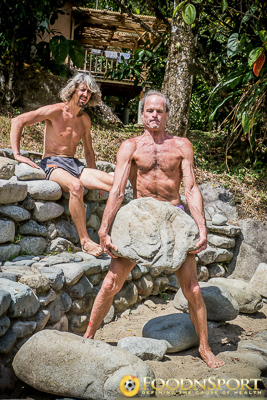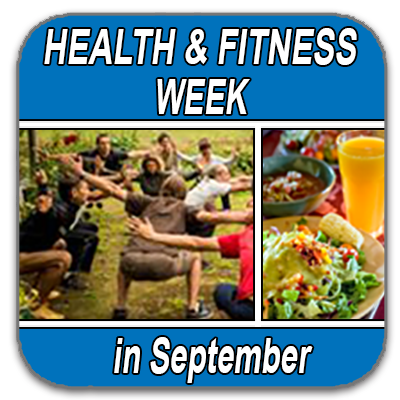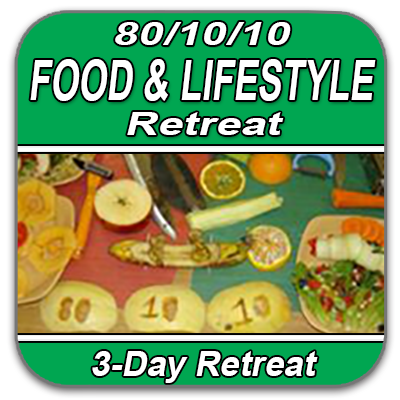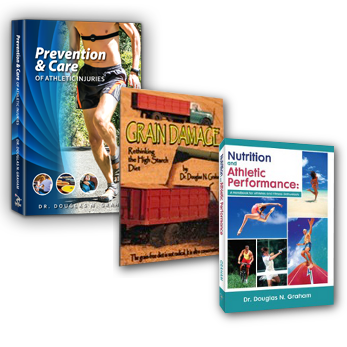
The trick to having a good competition day is to make it as much just like any other day as possible. We humans are creatures of routine. Our neuroplasticity is surprisingly limited. Take us out of our normal routine and our train of thought wanders, and we can very easily and quickly find ourselves befuddled, confused, and even panicked. Training is obviously the critical factor in having a good competition day, and simulation is an essential part of every athlete’s preparation training. But a day at a
powerlifting competition is difficult to simulate.
I normally put in a full day before lifting with my mates early in the evening. But on a competition day, you must show up early, for weigh-in, and then wait and indeterminate amount of time for your turn to lift. On a normal day, I know when I am going to be lifting, usually down to the minute. At competitions, the lifting order often isn’t even announced until after the weigh-in is completed. I could start lifting before ten in the morning, or might have to wait until four in the afternoon. At home, you go to wherever you usually go to lift, such as your own garage, a friend’s garage, or even a local gym, (hopefully it is someplace quite close to you,) you lift, and you go home. At a competition, you get up before first light, drive to the competition, however far it is, (in this case the competition was more than 100 miles away) and hope (read: worry) to show up in time for the weigh-in without experiencing mechanical problems, getting stopped for speeding, or having an accident along the way. You really want to save your adrenaline for the event, and not waste it all by being stopped by the cops.
To get to Dover, my coach and training partner, Steve Porter and I juggled all the variable logistics, weighed in successfully, and were then told that the order of competition for the day would be Juniors, Women, Open, and last but not least us, in the Masters group. We knew at that point that we were going to be in for a very long day. The competition was held in a freezing cold gymnasium, and because there is random drug testing, competitors are asked not to leave the building until after they compete. The competition actually started fifteen minutes early, at a quarter to ten in the morning, but we could only guess as to when we will actually begin lifting. I guessed that my first lift would begin at around four in the afternoon, and tried to settle down for the long wait. Sitting on ridiculously low benches in a very cold gym all day means that sleep, comfort, food, and many other issues are going to be quite compromised.
I could feel myself getting more thoroughly cold and stiff as the morning wore on. Lifters were lifting, but I could feel how watching them, feeling every lift with them, was draining my energy, so I sat in the back of the room making small talk with of few of the other Masters. The noise of the crowd was competing for my attention with the meet director’s endless announcements on the tannoy. The atmosphere was nothing like Steve’s garage, where we usually train. Music does not grace the hall on competition day, and I missed the usual blaring AC/DC that I have grown accustomed to. Nope, there is just no way to simulate a competition day.
I used to compete and coach trampoline, and am familiar with all-day events. They pose more than their share of logistical challenges. A day of powerlifting shares at least one thing in common with a day of trampolining; both are filled with their ups and downs. OK, all joking aside, powerlifting requires a high degree of focus. Everything you’ve got has to be concentrated into two to three seconds worth of lifting, and usually, at some point in each lift, there are a few nanoseconds during which you must decide that you are either going to complete the lift or fail in your effort.

Dr. Graham’s Flintstone Gym
Paying attention at a competition is challenging, however, because there are just so many distractions. Old friends from prior competitions show up, and new ones are made. The equipment is all just different enough from your own to be noticeable. For me, the less I notice in terms of distractions, the better. I want to focus, and I need to focus, or my lifting won’t go well. I want today to be just like any other day of lifting. But it won’t be. We’re here at a competition; and try as I may to get that (potentially stressful) fact out of my head, it is always there, front and center.
Each lifter has a goal, or goals, for the competition. Powerlifting is an exceptionally objective sport. An exact amount of weight is on the bar. You either lift it or you don’t. I have a plan and a goal for the day. My plan is to use the first lift in each discipline as a final warm-up lift, using a weight I feel confident about lifting. This gives me a score for the event. Each lifter must complete at least one lift in each discipline in order to be allowed to move on to the next discipline, and in order to receive a total score. The second lift in each discipline will be sufficiently heavy for me to qualify for Nationals next March, as THAT is my purpose for coming to this meet. I should be able to lift my second lift with confidence, as I’ve done those weights at practice many times. The third lift is to find out what’s in me today, to push myself a bit. Hopefully, I’ll make all three lifts in all three disciplines, but if I fail a third lift, it shouldn’t matter towards today’s goal. I just have to keep that in mind, and lift as if it was just another day. We’ll see. We arrived more than six hours ago. With luck, we should be starting our warm-up in an hour or so. Tom Petty was right. The waiting IS the hardest part.
The rest of the day is not a blur, but compared to the first seven hours, the final three hours went by in little more than a flash. While warming up and trying to get the cold and stiffness out of my body, and the cobwebs out of my head, I wondered if I really wanted to go through with the competition, but once it got started, I was very glad I came, and enjoyed every bit of the lifting. For my first squat I chose 90 Kg, as I was fairly sure I could lift that weight securely while demonstrating sufficient depth. I followed the lead referee’s commands, went down and up on cue, and got three white lights, signifying a good lift. That’s the way to start a competition, with a success.
My next lift was 100 Kg, heavier than I’d ever lifted in a competition, and again I received three white lights. I felt good. I was thinking I knew what I was doing. I’d reached my goal, and now I got my reward, which was to push on lift three. I could have played it safe, and lifted 105Kg, but I chose 110 Kg, and coming out of the rack it too did not feel heavy. I figured I’d nail it. I squatted to the required depth and as I began coming up with the weight I thought how well the lift was going. At that exact moment, I lost my focus, and the weight pushed me forward, enough so that I lost my upward momentum. I failed the lift due to a rookie error. The heavier the weight gets, the more it pushes you forward, a fact I completely forgot to allow for. Argh!
The day had been going so well, but I was still on track. I realized that that lift was over, and I needed to get my head into the next lift, my first bench, which was to be 70 Kg. I warmed up in relaxed fashion, and the first lift went easily enough. Next was 75 Kg, which is near my limit. I received three white lights, but it took plenty of effort. I chose 77.5 Kg for my final lift, and that was enough, and again I received three white lights. I wanted 80Kg, but I really was not sure I would have made 80 Kg.
The day now boiled down to the deadlift. My opening weight was 142.5 Kg. I expected no problems, and the lift went according to plan. For my second lift, I chose 152.5, which would give me the 330 total I came to earn. I had to put in more effort than I was expecting to expend, and I saw stars after the lift, but I earned my three white lights. I’d been thinking of 162.5 for my third lift, but chose to go for 160, and it was good I did, as if it had not been for the roar of the spectators, I would have given up. That lift was an effort, taking a full seven seconds but I am glad to say I made it.
My total was 337.5 Kg for the day. I’m focused already on my next competition, in November, and my goal is 350 or better. For March 2016, I want 360 Kg, and my training towards that goal starts immediately…after I take a few well-earned days off from lifting.
Steve coasted through his day, lifting heavy but making it look easy, earning a total of 555 Kg., which was more than sufficient to qualify for Nationals in his age/weight group as well. He’s committing to a 620 Kg total for March. Steve brings three decades of lifting experience to the platform, and is in every way a pro. We have some work cut out for us, but I’m sure it will all be fun. For a bit of perspective, I’d never ever lifted weights in my life until almost four years ago, when I was introduced to powerlifting. My maximum lifts at that time were 60/60/90 Kg, in squat, bench, and deadlift respectively, but I could not have done that all on the same day.
After squatting, coming up with the legs to deadlift is really challenging, so we normally squat and deadlift on different days when training. I doubt I could have totaled 200 Kg if I’d tried those lifts all in one evening. Today’s total of 337.5 Kg represents a lot of progress. In my early days of training, some of the other “senior” lifters informed me that I shouldn’t expect to get any stronger, as I was already past that age, but by training, I could hopefully somewhat slow the onset of increasing weakness that was surely already upon me. I credit my coaches, the inspiration of my lifting mates, and The 80/10/10 Diet with my continued improvement.
Articles:
- Deadlifting Instructional Video by Dr. Graham
- Deadlifting Basics: The Proper Stance by Dr. Graham
- 5 Strength Training Myths by Dr. Graham
- You are NEVER too old by Dr. Graham
- Deadlift Video Review Now Available! by Dr. Graham
- Fitness: Simple Answers to Common Questions by Dr. Graham
- Getting Optimal Results by Dr. Graham
- Raw Vegan Fitness with Dr. Graham by Dr. Graham
- Getting Started: Putting Your Inertia To Work by Dr. Graham
- More Fitness Articles
Retreats:
Amp Up Your Fitness 
|
Practical Skills To Thrive 
|
Self-Study Materials:
Raw Athlete’s3 Book Combo |
The 80/10/10 Family Membership 
|
80/10/10 Bootcamp How To Live 80/10/10 
|


